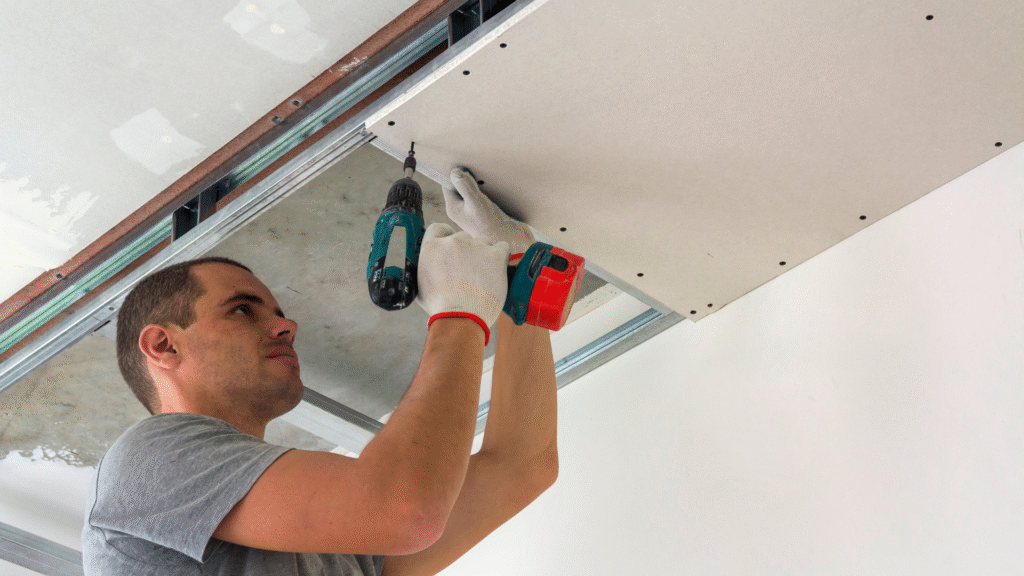
When you’re in the planning stages of a large-scale commercial project, don’t you wish there were a fastener guide to make selection easy?
At Pro-Twist®, we know how important efficiency is on a build, and we’re here to help. Small details like fastener selection can make or break your project. The wrong fastener for any application can leave your team frustrated, inefficient, and your project behind schedule. Even worse, materials that can’t support the required load result in unstable, unsafe structures that won’t pass inspection.
Even seasoned pros don’t always know which fastener is ideal for their application. With so many factors to consider and new solutions entering the market, it’s impossible to know all of them. Rather than keeping up with the latest trends, what’s more important is choosing the right one for your unique application.
Primary concerns include:
Each plays a role in determining which solution is right for you. We’re walking through the selection process and providing insights into why using the right fastener truly matters.

Choosing the right fasteners for each project is integral to the long-term success of your build. While correct usage has benefits, choosing the wrong one can be catastrophic. Even something seemingly as simple as length, thread, or head type can impact your outcomes.
Too short, and there may not be enough embedment to hold. If you use the wrong thread type, you have an increased risk of pullout. Head type will affect your fastener’s final look and function, and the wrong one reduces compressive holding power. Corrosion resistance impacts how well your build withstands the elements and reactive materials. Rust breaks down the structural integrity of a fastener and may require replacement or even a complete rebuild.
Spec’ing out a project’s budget is an integral part of the bidding process. While including the most cost-effective fastener you can find is tempting, it’s not always the right one for the project. Instead, consider one that balances the features you want with the budget a client is comfortable with. In the long run, you’ll have fewer callbacks, repairs, and scheduling delays that can impact your timeline.
Commercial building projects must meet strict building codes and standards for fastening solutions. Certifying organizations provide testing protocols for commercial applications that ensure products perform as designed.
Now that we’ve outlined why choosing the right fastener matters, let’s look at how to choose the right one.

Structural engineers and builders approaching a new project should consider these questions before making a purchase order.
Fasteners in load-bearing applications must meet stringent standards to withstand the anticipated forces.
First, you should determine if a load-bearing screw will be under a static or dynamic load. Stationary connections exert a consistent, unchanging force on the material. In these cases, engineers consider the maximum amount of force a fastener will be under.
Dynamic loads change, vibrate, or shift during regular use. For these connections, engineers must consider fatigue failure and points where breakdown may occur over time.
Under a shifting load, the fastener needs high tensile strength to resist pulling forces. Shear strength is also essential as it indicates how much perpendicular force a material can withstand. The right balance of qualities ensures a solid connection that holds up to stressors and performs as intended.
Fasteners are typically fabricated from carbon steel or stainless steel for most commercial applications. Stainless steel is naturally corrosion resistant, while most others are susceptible to corrosion when exposed to moisture or corrosive chemicals.
When joining different types of metals, galvanic corrosion may occur when exposed to electric currents and moisture. Manufacturers coat or plate with zinc, polymers, and ceramic coatings to prevent early breakdown from corrosion.
Beyond the fastener material, you must also consider the substrates you’re joining.
Engineers design fasteners for each combination of materials for optimal performance. For example, metal to metal screws usually have fine threads, self-drilling points, and heads that sit flush or proud to the finished surface.

Moisture is the single most significant contributor to early fastener failure. While it might be possible to prevent exposure in some use cases, fasteners in outdoor settings are constantly exposed to the environment. Extreme temperatures can also stress a fastener to the breaking point.
Whether in arctic tundras or coastal waters, choosing a fastener designed to hold up over time is essential. In coastal areas, stainless steel is the best choice as it won’t rust under regular exposure to saltwater and mist. Next-generation coatings might provide some protection, but if damaged, they’re no match for stainless steel’s self-healing qualities.
You won’t always need high-performance coatings, but installing a fastener meant for indoor use outside can lead to significant issues.
Standard protective coatings for outdoor use include zinc plating, hot-dip zinc coating, and polymer or ceramic coatings.
Fasteners are typically fabricated from ductile materials that can withstand different forces. Tensile strength refers to the amount of stress a metal can handle before it fractures or breaks. When planning for heavy load static or dynamic connections, work with an engineer to determine how much tensile strength you need.
Torque, or twisting force, is common when the load or connection shifts. For these connections, a fastener that can resist and reform is vital.
Ideally, you want a fastener that accommodates any extremes it may encounter in the intended application. Working together, elements like material, design, and finish should meet your needs.
We’ve already mentioned several certifying bodies in the building products industry. Testing protocols and certifications exist to ensure that materials perform as expected and to standards.
Before construction, engineers draw an architectural drawing and specify fasteners based on the stresses and environmental challenges they see. If manufacturers aren’t fabricating products from materials that meet standards, the structure could fail to pass inspection or simply fail altogether.
Here are the most well-known groups that create standards for building materials.

To help you choose the right fastener for your project, we’ve embedded an application-based fastener selection tool on our new website.
Users can also choose building solutions based on any criteria we’ve discussed and build a submittal on our homepage. The resulting document contains a condensed version of the technical specs for planning purposes or to share with a structural engineer.
Pro-Twist. Professional-grade fasteners for professional-grade work.